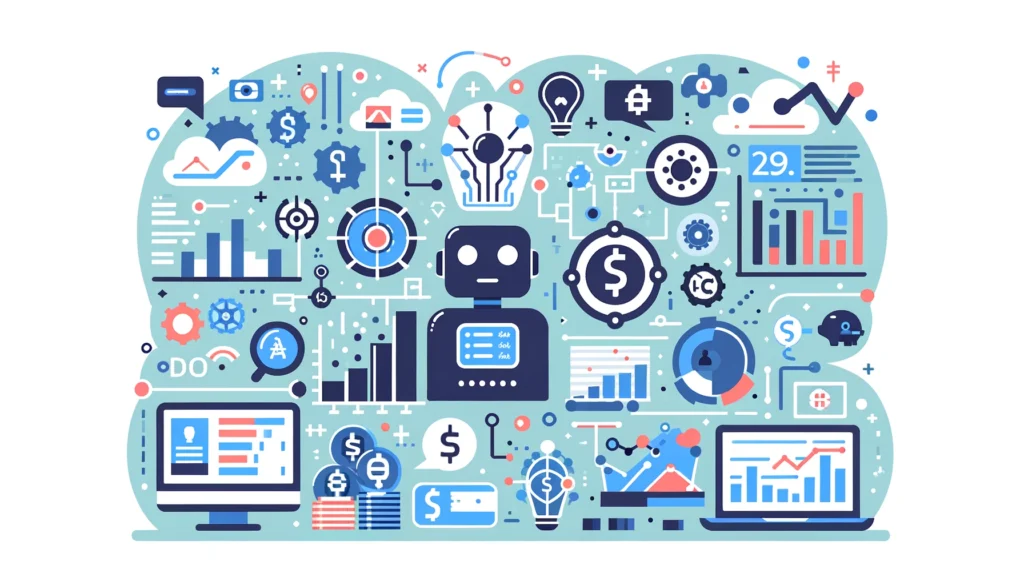The financial landscape is rapidly changing, and staying ahead is the key to thriving in this dynamic environment. The five key trends we will explore encompass a broad spectrum of the financial industry, ranging from technological advancements to shifting customer preferences and regulatory changes. These trends hold the potential to disrupt traditional business models while presenting exciting opportunities for growth and innovation.
Financial Industry Trends
Back-Office Efficiency through Seamless Integration and Automation
The financial industry is witnessing a transformative trend in back-office operations, driven by seamless integration and automation. Financial services organizations are automating key processes, integrating systems, and adopting cloud technology to enhance productivity, reduce costs, and achieve operational efficiency.
This trend empowers institutions to compete effectively in the digital-first marketplace, unlocking growth potential through optimized resources and strategic decision-making. Embracing these innovations positions financial organizations at the forefront of industry evolution, ready to thrive in an increasingly competitive and digital world.
Artificial Intelligence and Machine Learning in the Financial Industry
Artificial intelligence and machine learning possess the remarkable ability to gather, analyze, and process vast datasets within seconds, with minimal error. This liberates financial institutions from time-consuming manual data analysis, enabling them to focus on acting upon data-driven insights. IDC’s research predicts that by 2026, a staggering 85% of organizations will harness AI and ML to enhance foresight, resulting in a remarkable 25% increase in overall productivity.
By leveraging AI and ML for data analysis, informed decision-making, and personalized customer experiences, financial institutions can position themselves at the forefront of the industry, equipped to thrive in an increasingly competitive and tech-enabled world. As the IDC predicts the widespread adoption of these technologies across industries, the financial sector’s potential for growth and innovation becomes ever more apparent.

The Growing Significance of Cybersecurity
Cybersecurity must take center stage. Strengthening data security measures, fostering customer trust through enhanced security practices, and collaborating with trustworthy partners are non-negotiable steps to ensure the industry’s stability and growth.
Financial institutions are prime targets for hackers due to the immense value of their customers’ financial and personally identifiable information (PII). Breaches in data security can be devastating, resulting in significant customer attrition and revenue loss.
As cyber threats continue to escalate, customers are becoming increasingly discerning about where they entrust their sensitive information. By prioritizing cybersecurity, financial institutions can instill confidence in their clients, assuring them that their data is handled with the utmost care and protection.
The Growth of DeFi
DeFi is changing how people use financial services. Instead of relying on banks, DeFi platforms offer services directly to individuals. This is great news for those who don’t have access to traditional banking, as they can now join the financial world easily.
Investors are taking notice of DeFi’s potential, and billions of dollars are already being invested in these platforms. In the future, even more, people will use DeFi as they realize its benefits.
The secret behind DeFi is blockchain technology, which makes transactions secure and transparent. This new way of handling money has the potential to challenge banks and create a more open and accessible financial system.
Central Bank Digital Currencies (CBDCs)
CBDCs are digital versions of traditional fiat currencies, backed and issued by central banks. This innovation holds the potential to revolutionize finance, offering increased financial inclusion, reduced transaction costs, and enhanced control over monetary policies.
They grant central banks greater control over monetary policies. With real-time data and analytics, central banks can make more informed decisions and respond swiftly to economic shifts. This enhanced control fosters stability and resilience in the financial system.
This is set to revolutionize the financial industry, offering increased financial inclusion, reduced transaction costs, and improved monetary policy control. As the global interest in CBDCs grows, financial institutions and businesses must adapt strategies to embrace the digital currency revolution.
Level Up Your Financial Marketing and Public Relations
In this blog, we explore five key trends shaping the future of the financial industry starting from back-office automation, AI and ML advancements, cybersecurity’s significance, the growth of DeFi, and Central Bank Digital Currencies (CBDCs). These trends present exciting opportunities for growth and innovation, driving the industry toward a dynamic and tech-enabled future.
At FinPR, we are committed to helping financial companies navigate these trends and achieve their goals through innovative marketing and public relations strategies. Our tailored solutions, including crisis management, digital media expertise, and influencer marketing, elevate brand exposure, reputation, and trustworthiness.
Don’t miss the chance to thrive in the ever-changing financial world. Reach out to FinPR for expert financial marketing and public relations strategies. Let’s partner together to take your brand to new heights in the fast-paced financial industry. Our experienced team is here to guide you through the latest trends, ensuring your success in a rapidly evolving market.